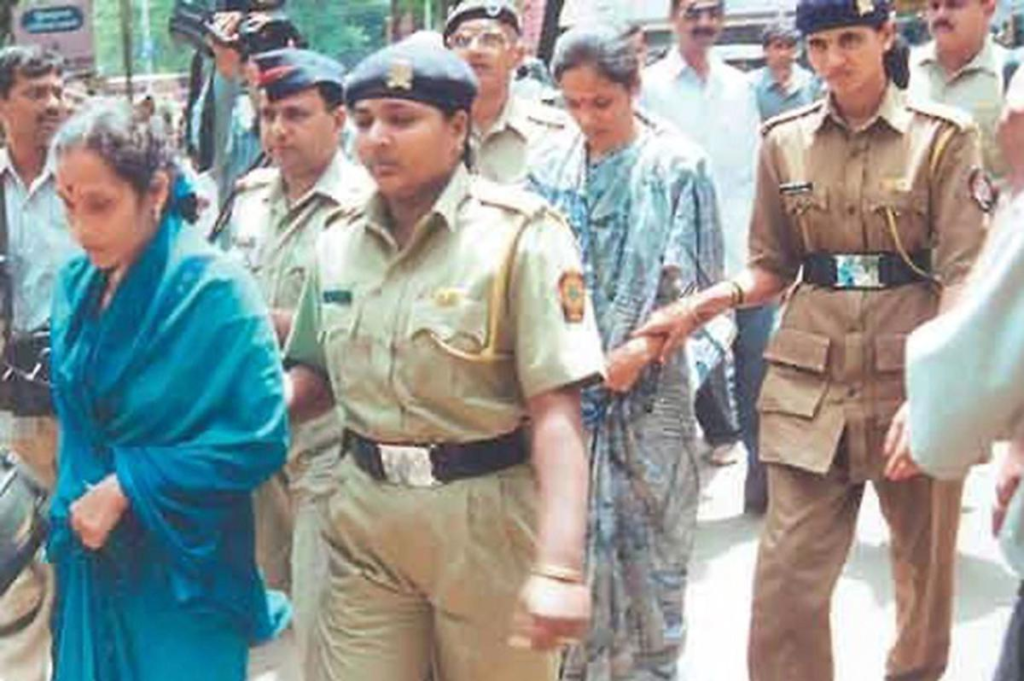
The walls were closing in on Renuka and Seema Gavit. With their mother, Anjanabai, dead and the police relentless in their pursuit of justice, the reign of terror they had orchestrated for years was finally coming to an end. But the horror of their crimes had left scars that would never fade.
As investigators pieced together the gruesome puzzle, they built a rock-solid case against the sisters. A breakthrough came when Kiran Shinde, Renuka’s husband and a key accomplice in the kidnappings and murders, decided to turn approver. With the weight of the law pressing down on him, Shinde chose self-preservation. He struck a deal with the authorities full disclosure in exchange for a pardon. What he revealed sent chills down the spine of even the most hardened officers.
Shinde provided intricate details about how the sisters lured children, how Anjanabai masterminded the abductions, and how the victims were tortured before being ruthlessly killed. He described how their tiny bodies were discarded in isolated locations, their cries for help fading into the abyss. His testimony proved to be the final nail in the coffin for Renuka and Seema.
The case moved to the Sessions Court in Kolhapur, where the prosecution presented overwhelming evidence. A staggering 156 witnesses were called to testify, each adding another layer of horror to the already damning narrative. The court examined every aspect of the sisters’ crimes how they identified their victims, how they gained the trust of families, and how they carried out their merciless killings.
By the time the court reached its verdict, there was no doubt about the guilt of Renuka and Seema. They were charged with thirteen kidnappings and ten murders. However, due to a lack of evidence in some cases, the court could only convict them for six of those murders. Still, the heinousness of their actions warranted the severest of punishments. On June 29, 2001, the Sessions Court handed down the death penalty to both sisters. Justice, though delayed, was finally served.

The legal battle did not end there. As is customary in capital punishment cases, the matter moved to the Bombay High Court. On September 9, 2004, the High Court upheld their convictions but acquitted them of one murder charge. Despite this minor reprieve, their fate remained unchanged. The sisters, who had spent years instilling fear in the hearts of families, were now staring at their mortality.
Their final hope lay with the Supreme Court of India. But the highest court in the land saw no reason for leniency. On August 31, 2006, the Supreme Court confirmed their death sentence, marking the end of one of India’s most horrifying criminal sagas.
Even behind bars, the sisters remained defiant. They never showed remorse, and never sought forgiveness. They had lived their lives devoid of empathy, and their last years in prison were no different. While awaiting execution, they became mere shadows of the ruthless killers they once were.
Over the years, various human rights groups debated their sentence, arguing against capital punishment. But for the families of the victims, there was no question that justice had finally prevailed. The sisters had taken the most innocent of lives, and now, they would pay the ultimate price.
As we close this chapter, the tale of the Gavit sisters remains one of the darkest in Indian criminal history. Their story serves as a haunting reminder of the depths of human depravity, but also of the resilience of justice.
Their execution, though delayed for years, loomed over them like an inescapable shadow. The women who once thrived on fear now lived in its grip, awaiting when the noose would tighten around their fate.
The nightmare they created had finally come to an end. But the scars they left behind? Those would remain forever.
Stay tuned for our final episode, where we uncover the aftermath of the legacy of terror, the emotional toll on the families, and the lingering echoes of the Gavit sisters’ crimes. Till then keep reading Dip dives





